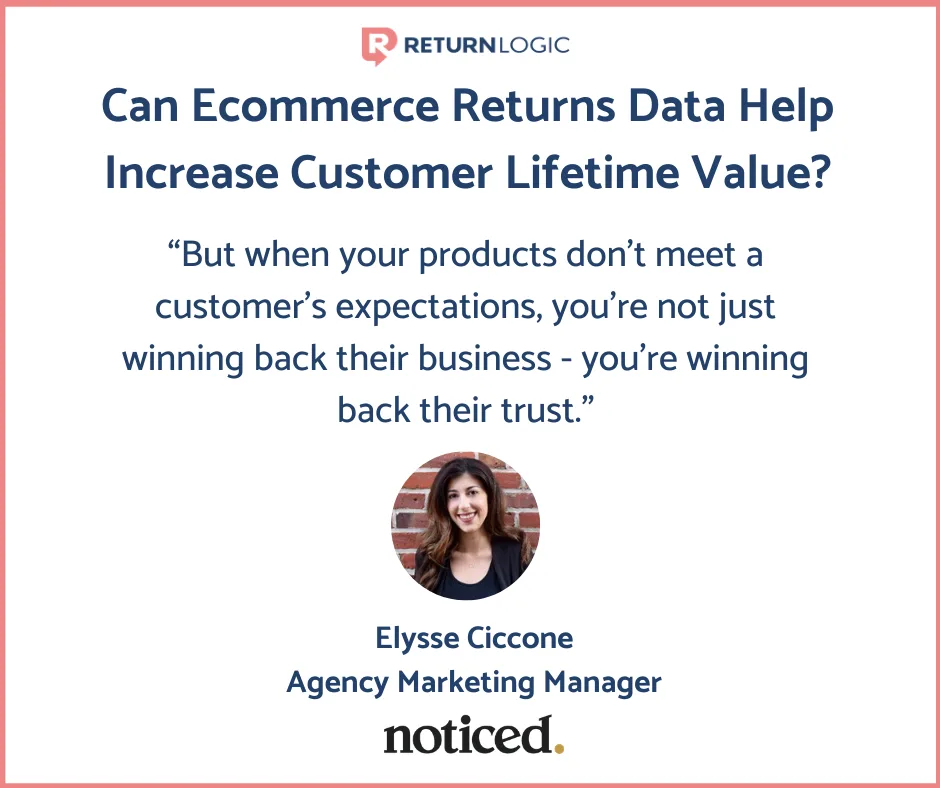How the Ecommerce Returns Process Impacts the Customer Experience

Customer experience is a universal consideration in e-commerce. In today’s competitive retail landscape, an optimized customer experience is a base-level assumption. The e-commerce return process is no exception.
Customer experience shapes the goals of every team within an e-commerce brand and plays a role in nearly every conversation we have with retailers.
How do Returns Impact the Customer Experience?
By now, it’s agreed that return policies impact shopper conversion. Almost half of all shoppers check the return policy before purchasing from a brand and tend to be most dissuaded by restocking fees, shipping fees, and short return windows.
On the bright side, we’re able to establish return policy best practices to remove some of the pre-purchase friction associated with product returns.
Strict and punitive return policies are likely to leave a bad taste in the customer’s mouth. The shopper is already giving up a product they thought they would love; the retailer’s goal should be removing as much friction as possible from the return experience.
On top of that, an inefficient return process results in a long wait for an exchange or refund. This wait is bound to cause some frustration and most likely quite a few emails to Customer Service.
But less understood is how the return experience affects the subsequent journey of the shopper.
We caught up with Noah Singer, the Product Management Director for the e-commerce CRM platform Drip. In our discussion, he emphasized the importance of driving multiple purchases in the customer journey.

Retailers know that converting a customer isn’t the pinnacle of e-commerce. The real key is converting and retaining the shopper to create loyal repeat buyers.
Acquisition costs are on the rise. Thus, you can’t underestimate the importance of customer experience and loyalty to the health of a brand.

30% to 40% of a retailer’s shoppers return a product by their 3rd purchase. Thus, the return experience is every bit as much a part of the e-commerce journey as any other aspect. Yet, it’s not given nearly the same attention in the discussion.
This deficit is due to a fundamental lack of coherence around the impact of e-commerce returns on the shopper’s overall experience and future relationship with the brand.
The truth is, a return doesn’t have to hurt the customer experience. It doesn’t have to lessen the Customer Lifetime Value. It comes down to the circumstances behind the return and how well you manage the return experience.
A shopper who returns a product because it was too small, for example, is more likely to repurchase than one who returns a product because of a quality or product description issue.
For one of our retailers, around 75% of returns due to sizing saw a purchase since. On the other hand, the repurchase rate of returns induced by a misleading product description was only 33%.

The reason listed for a return indicates the customer experience and thus reflects the likelihood of repurchase. Return data informs lifetime value.
Singer recommends picturing a return due to sizing as a chance to sweep the shopper off their feet. He explains, “Invest a little bit in that. Cover shipping, give them a credit to get another purchase.”
If the reason was related to quality, Singer advises that you quickly try to identify the problem. Was it an issue with that particular product, or is there a more systematic issue with your product line?
From there, the focus becomes rebuilding trust with the shopper at hand. Singer cites social proof, such as product reviews, as a powerful tool to do so.

Optimizing the E-commerce Return Process
To perceive the true impact of returns on the customer experience, you must first acknowledge that the return experience isn’t perfectly analogous across returns.
Each case is slightly different. Additionally, your rules, policies, and processes as a retailer have an effect of their own.
Product returns are an inseparable part of the e-commerce customer experience. Rather than pretending returns don’t occur, retailers can incorporate the event into their existing customer relationship strategy.
As Singer added, “When you have a customer who makes a return, you have a customer who made a purchase.”
Getting a customer to make that first purchase is no easy task. But once you’ve cleared this initial hurdle, a return shouldn’t stand in the way of customer loyalty.
A return is an inherent sign that the shopper is interested in your brand and has strong purchase intent, but their expectation of the product didn’t quite match up with reality.
The next objective after processing a customer’s return is to address what went wrong in the experience. Then, if you can, sweep them off their feet and regain a loyal shopper.
This is precisely the role return management solutions play.
By embracing the e-commerce return process as another opportunity to engage your hard-won buyers, you can flip the script and create a truly memorable experience.






